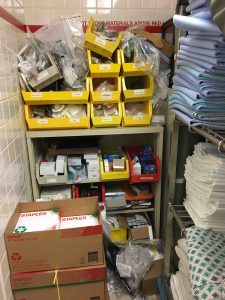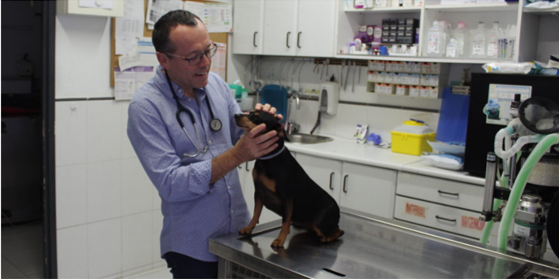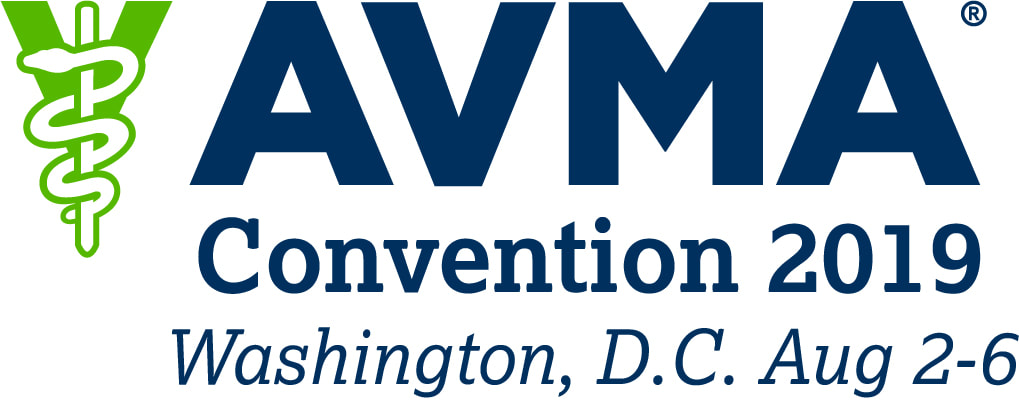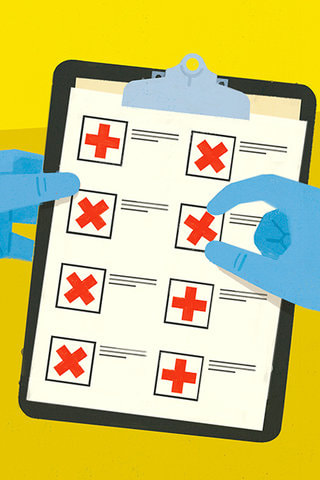Is this you?
From the Leanvets.com blog
|
I took my dog to a large Veterinary practice about a year ago and needed to use the restroom. The restroom was tucked inside the clinical staff area, so I needed to navigate through some hallways to get to where I needed to be. Along the way, I was able to see “behind the curtain” of this operation. I was disturbed to see rooms full of medical supplies in random areas, cardboard boxes both opened and unopened piled on top of each other, medical devices stacked on top of unfolded towels and on top of unopened boxes, there was almost zero floor space for staff to move around. Random bottles that looked to contain some sort of medication were in random locations. Then there was the office with piles of paperwork, computer terminals were poking through the mess, almost as if they were struggling for air.
The staff was walking from room to room and asking each other “have you seen the (X clinical item)?” “Did you call Mrs McGillicuddy or was I supposed to”? “Sorry for the wait, Mr. Cronin, we’re really busy today” and “We will need to schedule your next appointment, we were hoping the machine would be ready today, but it’s in need of maintenance”.
I made it to the restroom and got to see more of the same on the way back. The trip made me pause, as I now questioned the quality of care my dog was about to receive. I’m also thinking about what I was going to get billed for and why I need to come back. Piles of inventory and random clutter, medications that didn’t seem to belong there, medical devices mixed with cardboard boxes filled with supplies 3-boxes deep. Machines that should be operational but are not. The red flags were popping up everywhere. What am I paying for? Can I trust this clinic? Who can I trust here? Do they know what they are doing?
You can tell a lot from what you see in a clinic. Maybe some of the judgements are assumptions, but often they are pretty accurate. The telltale signs of disorganization, the questions staff ask each other, the delays, the missed information, the clusters of inventory that often contains expired materials; all give me the chills, no matter if I’m going for my annual physical or if I’m taking my dog to the Vet. To me, the paying customer, they all tell a story of wasteful processes that I know are built into my bill.
I’ve been a Lean practitioner in healthcare for a few years, watching and helping clinical teams improve their care to the patient in the bed. If they can do more for the patient in a better, easier way, they are all over it. I now work in the Veterinary world, and I have seen amazing transformations of quality of animal care and improvements to the Veterinary staff quality-of-life by focusing on improving small (sometimes tiny) process that support their daily work. It’s so exciting to see folks enjoy the teeny challenges of improving their own work. Lousy processes are like “pebbles in your shoe”; workers agonize through the customs and clutter; given the chance, they would stop and remove the pebble to make life better. Lean thinking does just that for workers, and the animals and their owners benefit exponentially.
If you ever feel frustrated, rushed, frazzled, buried by complaints, or workers constantly asking questions looking for “common sense’ answers, the prescription may not be buried in a store room or office, but right here, sitting out in the open at no charge to you. The world of Lean thinking is liberating, and Lean thinkers are eager to share their learnings and experiences with you. We are here to help you; we’ve all been through the same frustrations and we found the prescription. Take one small dose daily; you will be amazed at how your quality of life will improve. (My dog is OK by the way).
Gerry Cronin
[email protected]
Vivarium Operational Excellence Network
www.voenetwork.com
The staff was walking from room to room and asking each other “have you seen the (X clinical item)?” “Did you call Mrs McGillicuddy or was I supposed to”? “Sorry for the wait, Mr. Cronin, we’re really busy today” and “We will need to schedule your next appointment, we were hoping the machine would be ready today, but it’s in need of maintenance”.
I made it to the restroom and got to see more of the same on the way back. The trip made me pause, as I now questioned the quality of care my dog was about to receive. I’m also thinking about what I was going to get billed for and why I need to come back. Piles of inventory and random clutter, medications that didn’t seem to belong there, medical devices mixed with cardboard boxes filled with supplies 3-boxes deep. Machines that should be operational but are not. The red flags were popping up everywhere. What am I paying for? Can I trust this clinic? Who can I trust here? Do they know what they are doing?
You can tell a lot from what you see in a clinic. Maybe some of the judgements are assumptions, but often they are pretty accurate. The telltale signs of disorganization, the questions staff ask each other, the delays, the missed information, the clusters of inventory that often contains expired materials; all give me the chills, no matter if I’m going for my annual physical or if I’m taking my dog to the Vet. To me, the paying customer, they all tell a story of wasteful processes that I know are built into my bill.
I’ve been a Lean practitioner in healthcare for a few years, watching and helping clinical teams improve their care to the patient in the bed. If they can do more for the patient in a better, easier way, they are all over it. I now work in the Veterinary world, and I have seen amazing transformations of quality of animal care and improvements to the Veterinary staff quality-of-life by focusing on improving small (sometimes tiny) process that support their daily work. It’s so exciting to see folks enjoy the teeny challenges of improving their own work. Lousy processes are like “pebbles in your shoe”; workers agonize through the customs and clutter; given the chance, they would stop and remove the pebble to make life better. Lean thinking does just that for workers, and the animals and their owners benefit exponentially.
If you ever feel frustrated, rushed, frazzled, buried by complaints, or workers constantly asking questions looking for “common sense’ answers, the prescription may not be buried in a store room or office, but right here, sitting out in the open at no charge to you. The world of Lean thinking is liberating, and Lean thinkers are eager to share their learnings and experiences with you. We are here to help you; we’ve all been through the same frustrations and we found the prescription. Take one small dose daily; you will be amazed at how your quality of life will improve. (My dog is OK by the way).
Gerry Cronin
[email protected]
Vivarium Operational Excellence Network
www.voenetwork.com
The LEAN Veterinarian
|
Lean has made its way into Veterinary practice around the world!
The biomedical research community has been practicing lean for over a decade, and there's hardly a profession where lean does not improve outcomes...healthcare, manufacturing, the service industry and it's now growing in popularity in veterinary medicine. Check out this story of how lean management is improving all facets of veterinary medicine around the world! planet-lean.com/the-lean-veterinarian/ |
VOE-N Presents at AVMA
Representatives from the VOE-Network, Dr Ronald Wilson, from Penn State Hershey and Dr Donna Matthews Jarrell, from MGH presented highlights from their lean programs to the AVMA conference in a first-time collaboration between AVMA and the VOE-Network. In attendance were Veterinarians from private practice, biomedical research and national organizations interested in learning more on the benefits of lean management.
The presentations and reference materials that were requested will be available here shortly.
In the mean time, the "Health Check Poster" mentioned in the session can be accessed below.
The presentations and reference materials that were requested will be available here shortly.
In the mean time, the "Health Check Poster" mentioned in the session can be accessed below.
For more information on the AVMA Presentations contact:
Dr. Ronald Wilson: <[email protected]> Dr. Donna Matthews Jarrell:[email protected] | |||||||||||||
"Choosing Unwisely"
|
Submitted by Steve Niemi, Harvard University FAS:
"Whether it's excessive PPE (including BL2 rodent cage precautions), using live sentinel rodents for colony health surveillance, relying on room rather than intra-cage environmental metrics for rodent housing compliance, feeding and discarding excessive rodent chow… waste is insidious and eroding our daily efficiencies" Like in healthcare, how we choose to approach or ignore those wastes can mean the difference between the efficient delivery of services or the delivery of useless, inefficient efforts that drive up costs and slow down service. Click on the clipboard to read the article. |





